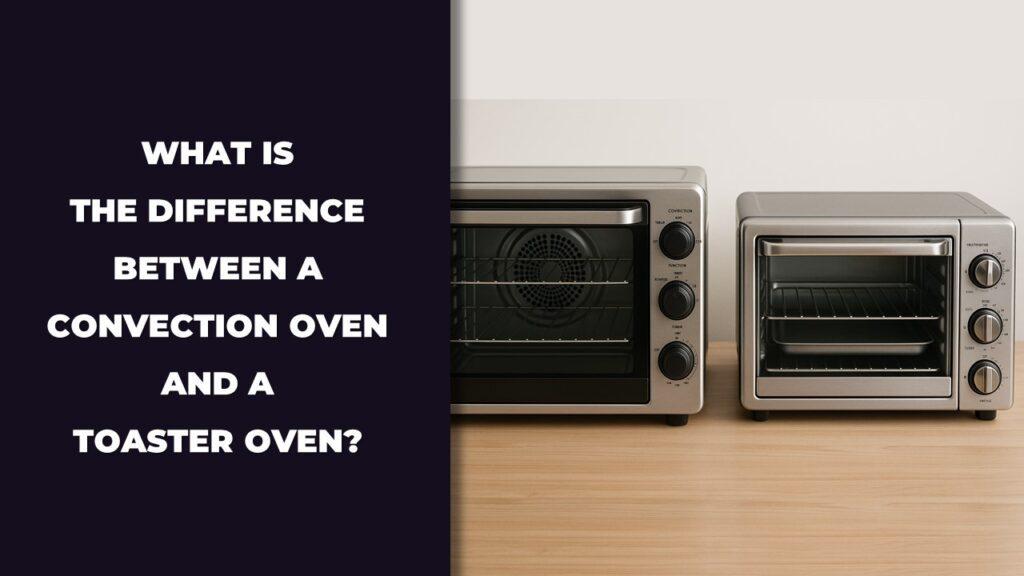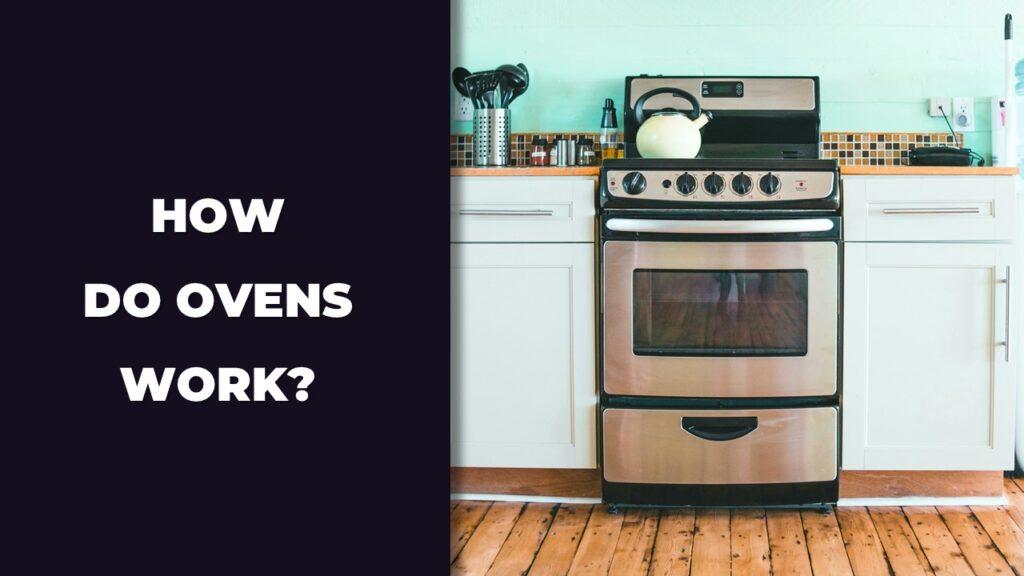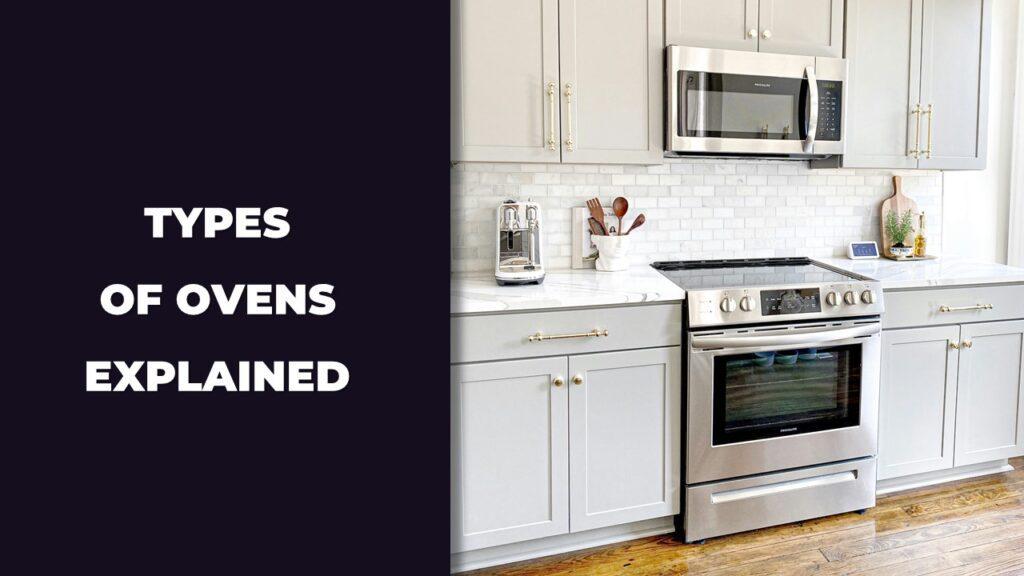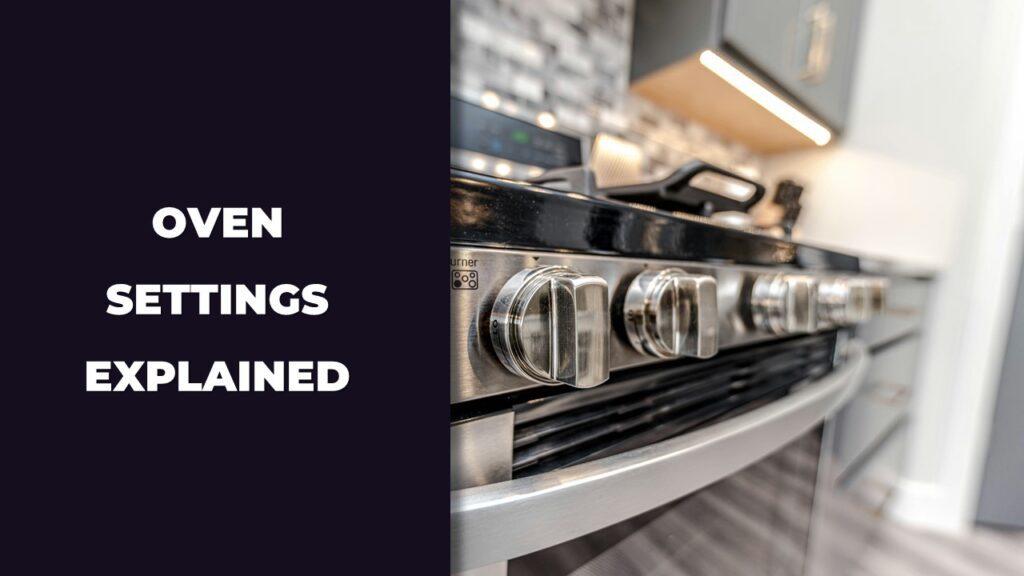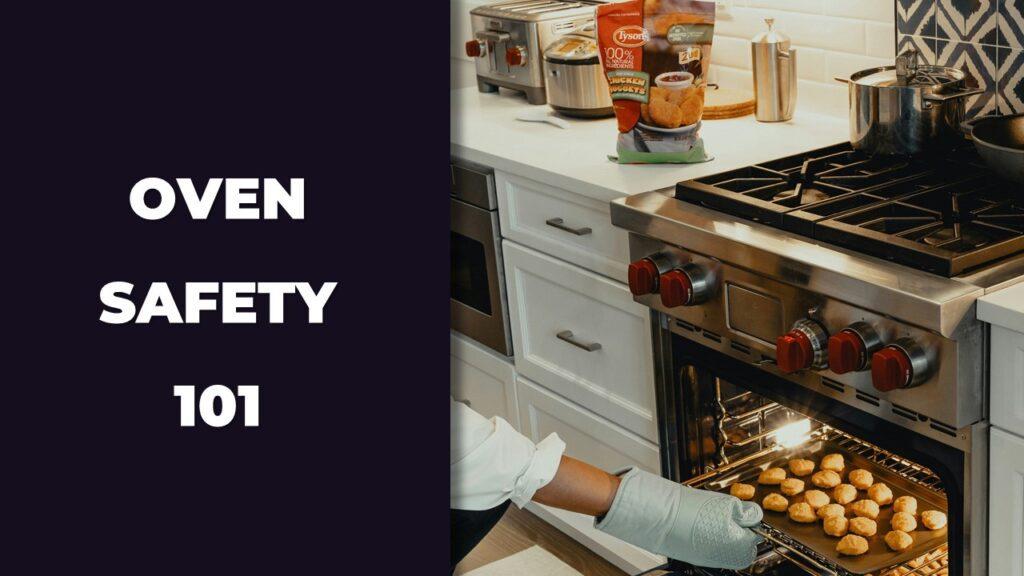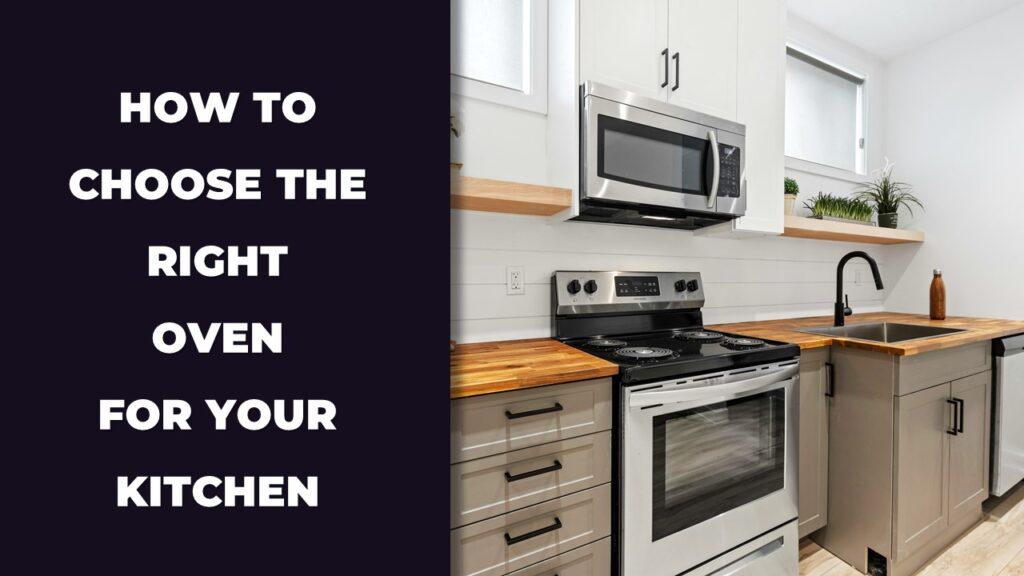
To use a convection oven properly, lower the cooking temperature by 25°F and check your food about 25% earlier than usual. The built-in fan moves hot air around your dish, which helps it cook faster and more evenly. Use low-sided pans, avoid overcrowding, and never block the fan if you want the best results.
We’ll go over how convection ovens work, what to cook in them, when not to use them, and the common mistakes people make. This way, you can stop guessing and start cooking smarter.
Convection Oven Basics: What It Does Differently
A convection oven works by using a built-in fan to move hot air around your food. This helps dishes cook faster and more evenly compared to a regular oven, where heat just rises from the bottom or top. The constant airflow surrounds the food from all sides, giving you better browning, quicker cooking, and fewer cold spots.
Now let’s break it down. Understanding how this fan works and how the settings differ can help you cook smarter and avoid dry or uneven results.
The Convection Effect: Why The Fan Matters
The fan inside a convection oven is the game changer. While a traditional oven relies on still air that rises and settles unevenly, a convection oven blows hot air around. That movement increases contact with the food’s surface, speeding up the cooking process and creating a drier environment.
Imagine sitting in front of a heater on a cold day. You’ll warm up much quicker if there’s a fan pushing the warm air toward you. That’s exactly what happens in a convection oven—except it’s your food getting the heat.
This circulating air also makes for better browning. Moisture escapes faster, so meats and veggies get crispier on the outside while staying juicy inside.
Convection Bake Vs. Convection Roast: Know The Settings
Most convection ovens come with two key fan-powered settings: convection bake and convection roast. While both use the fan, the difference is where the heat comes from.
- Convection Bake uses heat mostly from the bottom, paired with the fan. It’s gentler and works well for cookies, casseroles, and baked goods that need even rise without burning the top.
- Convection Roast uses heat from both the top and bottom. It’s more intense, making it perfect for meats and vegetables when you want that browned, crispy finish.
Picking the right setting matters. If you’re baking muffins, convection roast might dry them out. But for a chicken dinner? That setting will get you golden, crispy skin in less time.
How To Use A Convection Oven Properly (Step-By-Step)
To use a convection oven properly:
- Lower the temperature by 25°F from the original recipe.
- Check for doneness about 25% sooner than normal.
- Use shallow pans to help air flow better.
- Don’t overcrowd the oven.
- Avoid blocking the fan with foil or large dishes.
These steps can make a real difference in how your food turns out. Now, let’s walk through each one and why it matters.
1. Preheat Your Oven (And Why It Still Matters)
Even though convection ovens heat up quicker than traditional ones, preheating is still important. Your oven needs time to reach the target temperature and balance the airflow before you put in the food.
Skipping preheat time can leave your dishes unevenly cooked or underdone in the center. For baked items, especially, consistent starting heat makes all the difference.
Wait until the oven beeps or the light shows it’s ready. If your model doesn’t indicate this clearly, give it at least 10 minutes.
2. Adjust The Temperature And Time Correctly
This is where most people mess up. Recipes are usually written for regular ovens. If you don’t adjust the temperature or time, your food might cook too fast on the outside and stay raw inside.
Here’s a simple fix:
- Lower the temp by 25°F (or 15°C).
- Check your food 25% earlier than usual.
If your oven has automatic convection conversion, it may already do this for you. But it’s still good to check manually until you learn how your oven behaves.
3. Choose The Right Cookware
Airflow is everything in a convection oven, and your pans play a big role. Use shallow, low-sided pans so the fan can push hot air around the entire surface of the food.
Avoid using deep glass dishes or pans with tall sides unless you’re making something that needs to be covered or slow-cooked.
For crispier results—like roasting potatoes or baking cookies—metal baking sheets or rimmed pans work better.
4. Optimize Rack Placement And Airflow
Where you place your food matters just as much as how you cook it. If you cram trays too close together or to the walls, air can’t move properly. That means uneven cooking, soggy sides, or cold centers.
Stick to these basics:
- Keep one rack in the center for even cooking.
- Leave space between dishes and oven walls.
- Don’t put foil over racks—it blocks airflow and messes with cooking times.
If you’re cooking more than one tray, try to stagger them slightly and rotate halfway through.
5. Check Food Without Opening The Door Too Often
Every time you open the oven door, hot air escapes and the temperature drops. That messes with both cooking time and food texture.
Use the oven light and window to check progress instead. If you really need to open the door, do it quickly and close it right after.
It’s tempting to poke and peek, especially if you’re unsure about the timing, but trust your adjustments and give it space to do its job.
What To Cook (And What Not To Cook) In A Convection Oven
A convection oven is perfect for roasting meats, vegetables, and cooking crispy sheet pan meals. But it’s not ideal for delicate baked goods like soufflés or custards. The fan’s moving air can mess with the structure of foods that need gentle heat or slow rise.
If you’ve ever wondered why your cookies brown unevenly or your cakes rise lopsided, your convection setting might be the reason. Here’s what works well and what doesn’t.
Best Foods For Convection Cooking
If you’re craving crispy edges and even browning, this is where convection ovens shine. The circulating air cooks food from all angles and removes surface moisture fast.
- Roasted vegetables: Carrots, Brussels sprouts, and sweet potatoes turn golden and tender without constant flipping.
- Sheet pan dinners: Chicken thighs with veggies cook evenly and come out crisp.
- Meats with skin: Chicken or turkey gets a browned crust while staying juicy inside.
- Toasted nuts and seeds: Even browning without burning one side.
- Pastry and puff dough: Croissants and turnovers rise better with even airflow.
- Dehydrated fruits and chips: Perfect for apple chips or kale crisps with faster moisture removal.
Foods To Avoid In Convection Ovens
Some foods just don’t like moving air. They need gentle, steady heat to set properly.
- Soufflés and flans: The air can collapse them before they firm up.
- Delicate cakes: Chiffon and sponge cakes may ripple or crack.
- Quick breads: Items like banana bread might brown too fast or split.
- Custards and cheesecakes: Convection can dry them out or cause surface cracks.
Common Convection Oven Mistakes To Avoid
The most common convection oven mistakes are not adjusting temperature, blocking airflow, and cooking the wrong foods. These little missteps can turn a great recipe into a frustrating mess.
- Not adjusting temp or time: Stick with original recipe settings and you’ll probably overcook the dish.
- Using deep or tall pans: These stop the air from circulating properly.
- Overcrowding the oven: Too much food blocks airflow and creates uneven cooking.
- Covering racks with foil: Foil blocks heat flow and confuses the oven’s temperature reading.
- Baking delicate items on convection: Cakes and soufflés often don’t do well with fan-driven air.
- Not reading your oven manual: Some ovens auto-adjust, others don’t. You need to know how yours behaves.
- Opening the door too often: Every peek cools the oven and affects how your food cooks.
- Ignoring fan noise or buildup: If the fan sounds odd or is blocked, the oven won’t perform properly.
Tips For Better Results Every Time
To get better results from a convection oven, use low-sided pans, space out your trays, and trust the fan to do its job. A few simple habits can make a big difference.
- Use an oven thermometer: Double-check the real temperature, not just what the display says.
- Use shallow pans: Low sides help air circulate around the food.
- Check food early: Convection ovens cook fast, so check for doneness ahead of time.
- Leave space between trays: Crowding slows airflow and gives uneven results.
- Keep the fan area clear: Don’t block the fan with big pans or foil.
- Try easy recipes first: Start with roasted veggies or reheated pizza to learn how your oven cooks.
- Use light-colored pans: Dark pans absorb heat faster and may overcook your food.
- Rotate trays only if needed: Most convection ovens don’t need it, but do it if you notice uneven browning.
How To Convert Recipes For Convection Cooking
Using a convection oven with regular recipes doesn’t have to be tricky. You can follow a few simple adjustments to get better, more even results.
- Reduce temp by 25°F: If the recipe says 400°F, set your oven to 375°F.
- Or reduce cooking time by 25%: A 40-minute dish may only need 30 minutes.
- Or adjust both slightly: Lower the temp a little and start checking food earlier for a safe balance.
Example Conversions:
- Cookies: Original time 12 minutes at 350°F → convection time 10 minutes at 325°F.
- Roast Chicken: Original time 90 minutes at 425°F → convection time 70 minutes at 400°F.
- Casseroles: Original time 60 minutes at 375°F → convection time 50 minutes at 350°F.
- Frozen Pizza: Original time 18 minutes at 450°F → convection time 14–15 minutes at 425°F.
Start with those numbers and adjust based on how your oven performs. A little trial and error goes a long way.
Conclusion
Learning how to use a convection oven properly can change the way you cook. It’s not just about cutting down time, it’s about getting better texture, even cooking, and crispier results. The key is understanding how the fan works, adjusting your temperature or timing, and letting the air flow do its job.
Many people skip the manual or use the convection setting the same way they use bake. That’s where things go wrong. Use shallow pans, space your dishes out, and avoid foods that don’t do well with fan-driven heat, like delicate cakes or custards.
Now that you know how to use a convection oven properly and avoid common mistakes, you can confidently cook everything from juicy roasts to golden cookies. It might feel unfamiliar at first, but once you get the hang of it, you won’t want to go back.
Reated FAQs
Can You Use Foil In A Convection Oven?
Yes, you can use foil, but avoid covering racks or lining the entire pan. This blocks airflow and affects cooking.
Is Convection Better For Baking Or Roasting?
Convection is usually better for roasting. It crisps up meats and veggies. For delicate baking, stick to the regular bake setting.
Why Does Food Cook Faster In A Convection Oven?
The fan circulates hot air around your food, which speeds up surface cooking and gives more even heat.
How Do I Know If My Oven Is Convection?
Look inside for a fan at the back or check the control panel for settings like “convection bake” or “convection roast.”
Should I Preheat A Convection Oven?
Yes, preheating still matters. It helps the oven reach and stabilize at the right temperature before food goes in.
Can I Use Glass Or Ceramic Bakeware In A Convection Oven?
Yes, but these hold heat longer and may cook more slowly. For crispy results, metal or low-sided pans work better.

At our core, we’re a group of passionate households and gardening tools and appliances users and enthusiasts. We dive deep into the world of tech, especially when it’s about your household or gardening electric items. We try to provide as much value to the readers with our information and how to blog articles as possible. For affiliate articles our honest and transparent reviews of essential tech products are rooted in real-world experience. We take great satisfaction in offering unbiased evaluations, ensuring that you can make informed decisions when investing in your desired techs.

